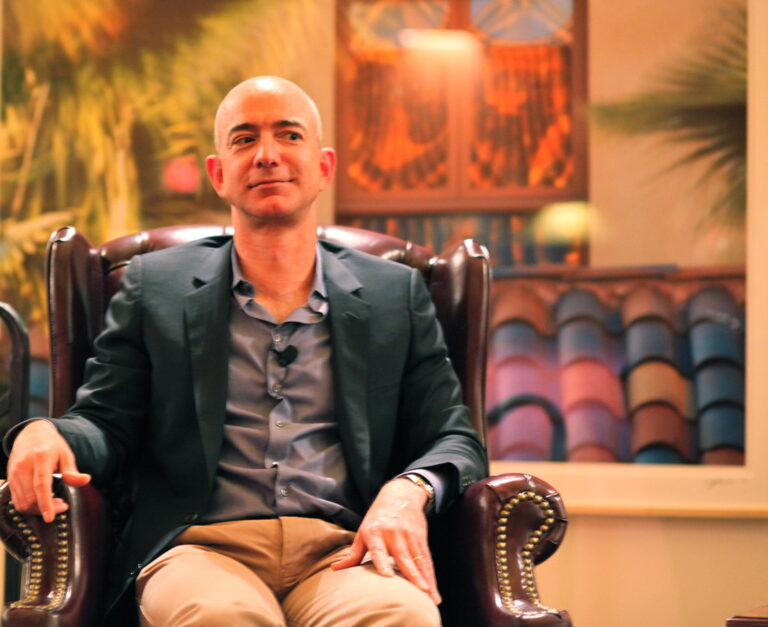
How deep will the change in leadership go?
Jeff Bezos, the business tycoon and founder of Amazon, stepped down as CEO on July 5. The reins are now in the hands of Andy Jassy. I recently was a guest on the Bloomberg Business podcast, and had the pleasure of discussing my advice to Andy Jassy. My portion of the interview begins at 00:20:40.
I’m sure many of us have heard, at the very least, whispers about the company culture of Amazon. It is indeed one of the world’s largest tech companies. In all the research I did for this post, the number one thing I found about Amazon’s company culture is that it is customer-centric. Always and first and foremost, the customer. Contrarily, here at Employee Fanatix, we work hard to meet the needs of each employee to meet the needs of the customer better.
How can my beliefs about Caring Leadership, which have become an online ecosystem, which you can find here, fit into the corporate beast of a company like Amazon? How can it fit into your organization? I will show you.
The Crux of the Issue
Has your company ever had to push through grueling times? The kind where you are understaffed but busier than ever? When you’re changing to meet consumer needs, but stretching your employees to the brink, and you know it too. So, what do you do?
You might encourage the recruiter to “bring in more bodies” (such a lifeless term for such an important business asset- it’s people). But more often than not, you push on full steam ahead with promises of bonus pay and a better benefit to quell the anger that your team rightfully feels.
If you want to model Caring Leadership within your organization, you need to let the above scenario play out differently. Don’t be an Amazon that tosses out little immunity boosters while trampling over employees’ real workplace needs.
If Amazon did change their leadership principles to be more employee welfare and empathy-centric, what would that look like for other organizations in the same boat?
The number one way to discover your employees’ needs is by listening to them. Then, after listening, there has to be action taken based on their feedback. Additionally, the number one way to ensure that your employees feel cared for is to communicate back to them everything you are doing for them.
Invest in Your Own People
Many times problems arise quickly but could take days, months, or years to resolve. For example, it takes longer to hire and onboard a person than it does for someone to quit. Instead, when we take the time to look deeply within our organizations and bravely stare the root of the issue in the face, we can craft a well-thought-out, multi-dimensional solution. By doing this, you’re more likely to execute it every step of the way. As a result, your problem will right itself and for far longer than it would take the following employee to feel replaceable, maltreated, and quit. The solution is to break the cycle. Why not take care of your current employees instead?
I recently read that before Jassy’s promotion, Amazon had just updated its leadership principles to be more employee welfare and empathy-centric. Well, although this sounds like a massive step in the right direction, it makes me a little nervous. How often do companies swimming in wealth hand out great compensation and benefits hoping to atone for the harsh working reality? It’s simply not enough.
I argue that shifting this focus to your employees and their needs does not contradict your customer-centric leadership approach. On the contrary, if your employees feel heard and cared for, they will feel valued and live out the mission of their work even more.
The Solution
After listening to the genuine concerns and complaints of Amazon employees, it might be daunting to consider the needed changes. Jassy should gather his leaders, and discuss the best solution for their employees. Furthermore, they might even have to reconsider their 14 company leadership principles. To combat deep-rooted issues within your organization, you also might have to do a cultural overhaul. Realign your vision, reinstate your values, and trust that you can do this and remain true to your overall mission.
I firmly maintain that you can put both customers and employees first within an organization. It’s simple-just care for people, on both ends, wherever they are. Listen on both ends. Grow and maintain a culture that sustains the level of work output and the employees’ wellbeing.
Everyone Matters
You need to include the people at every level of your organization. No “body” is more valuable because of its location. As human beings, they all matter the same. So create a future with intentions to better all the people in your organization no matter where they stand. I think that this multi-level inclusion fits perfectly with the following Amazon leadership principle:
Learn and Be Curious; Nobody in life ever finishes learning, and this includes leaders at Amazon. People in charge at Amazon should always be looking for how to know better and be better. Leaders are always seeking options as well as looking for ways to explore them.
What better way to “know better and be better” than by using the voices of the people who work with you? Using their voices will help you find perfectly tailored solutions for their needs. This work shouldn’t have to be internal, added to the plates of people already experiencing burnout. Like my team, there are people out there who come in to handle this challenging change process.
Start with Listening
Leaders, if you’ve ever had your organization compared to Amazon, are worried about a bad reputation for employee wellbeing, or have experienced firsthand the trials that your team has to work through, then start here. Start with listening.
